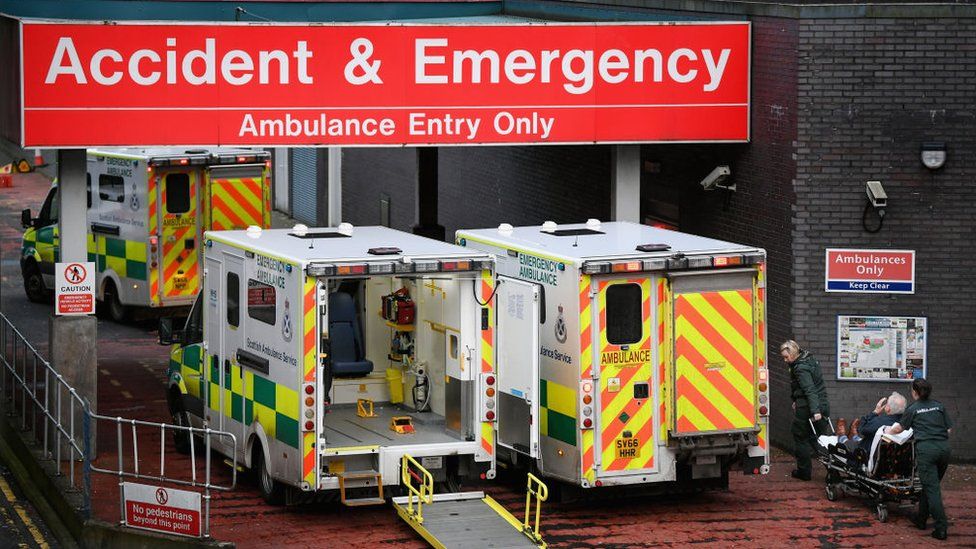
Public Health Scotland found that 2,627 patients spent more than eight hours in A&E last week, and 1,022 of them were there for more than 12 hours.
However, there a slight improvement in the percentage of patients seen within four hours – the government’s main target for wards – to 68.4%.
Doctors have said hundreds of patients have died due to hospital delays.
Health boards point to record numbers of patients being treated for Covid along with staff shortages as putting unprecedented pressure on services.
And the Scottish government said the figures appeared to be stabilising despite continuing high levels of Covid transmission.
The latest statistics from Public Health Scotland showed a slight drop in the number of people attending A&E in the week ending 27 March, from 25,506 to 25,264.
This coincided with an improvement in the percentage of patients seen within four hours, from 66.2% to 68.% – although this is still the third worst on record, and far below the government’s 95% target.
And the number of patients experiencing longer waits increased slightly, with the number spending more than eight hours in an emergency department before being admitted, discharged or transferred rising from 2,614 to 2,627.
Meanwhile, the number waiting 12 hours or more rose from 1,015 to 1,022 – the highest total since records began in 2015.
‘We can’t go on like this’
In March, the Royal College of Emergency Medicine estimated that there had been 240 avoidable deaths since the start of the year, blaming long waits for a hospital bed.
Vice president Dr John Thomson said it was “beyond doubt the biggest crisis that we have faced in emergency care”.
Opposition parties said A&E wards were in crisis, with the Scottish Conservatives saying “we can’t go on like this”.
And the Scottish Lib Dems called for an urgent inquiry into avoidable deaths, saying that “NHS patients and staff are in dire need of new hope”.
A Scottish government spokesman said new infection control guidance had been issued to health boards in the past week which could help ease pressures on hospitals and improve patients flows.
He added: “The latest weekly figures show performance in our A&E departments has slightly improved, although we know this may fluctuate in the weeks ahead as the unprecedented impact of the pandemic continues to take its toll.
“We are still seeing high levels of Covid transmission and people in our hospitals with the virus, but there are some indications that numbers are stabilising.”






